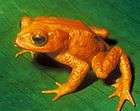Anagenesis
Anagenesis, also known as "phyletic transformation", and in contrast to Cladogenesis, describes the process in which a species, gradually accumulating change, eventually becomes sufficiently distinct from its ancestral form that it may be labeled a new species (a new form). Note that when this is deemed to occur no branching or splitting off of new taxa in the lineage is shown in a phylogenetic tree. When no populations of the ancestor species remain the ancestral species can then be considered as being extinct.
Development
Anagenesis suggests that evolutionary changes can occur in a species over time to a sufficient degree that later organisms could be considered a different species, especially in the absence of fossils documenting the gradual transition from one to another.[1] This is in contrast to cladogenesis, in which a population is split into two or more reproductively isolated groups and these groups accumulate sufficient differences to become distinct species. The Punctuated Equilibria Hypothesis suggests that anagenesis is rare and that the rate of evolution is most rapid immediately after a split which will lead to cladogenesis, but does not completely rule out anagenesis. Distinguishing between anagenesis and cladogenesis is particularly relevant in the fossil record, where limited fossil preservation in time and space makes it difficult to distinguish between anagenesis, cladogenesis where one species replaces the other, or simple geographic immigration/emmigration patterns.[2][3] Recent evolutionary studies are looking at anagenesis and cladogeneis for possible answers in developing the hominin phylogenetic tree to understand morphological diversity and the origins of "Australopithecus anamensis", and this case could possibly show anagenesis in the fossil record.[4]
When enough mutations have occurred and become stable in a population so that it is significantly differentiated from an ancestral population, a new species name may be assigned. A series of such species is collectively known as an evolutionary lineage.[5][6] The various species along an evolutionary lineage are chronospecies. If the ancestral population of a chronospecies does not go extinct, then this is cladogenesis, and the ancestral population represent a paraphyletic species or paraspecies, being an evolutionary grade. This situation is quite common in species with widespread populations.
Criticism
It is easy to see from this definition how controversy can arise among taxonomists as to when the differences are significant enough to warrant a new species classification: Anagenesis may also be referred to as "gradual evolution". Attempts to distinguish different forms of speciation as anagensis or cladogenesis are controversial, and some academics question the necessity of the terms altogether.[7]
The philosopher of science Marc Ereshefsky argues that paraphyletic taxa are the result of anagenesis. The lineage leading to birds has diverged significantly from lizards and crocodiles, allowing evolutionary taxonomists to classify birds separately from lizards and crocodiles, which are grouped as reptiles.[8]
Applications
Regarding social evolution, it has been suggested that social anagenesis/aromorphosis be viewed as universal or widely diffused social innovation that raises social systems' complexity, adaptability, integrity, and interconnectedness.[9]
See also
References
- ↑ http://www.pnas.org/content/110/8/2904
- ↑ http://www.pnas.org/content/110/8/2904
- ↑ https://www.cambridge.org/core/journals/journal-of-paleontology/article/the-oligocene-rodent-ischyromys-of-the-great-plains-replacement-mistaken-for-anagenesis/AAA19BF45AD62523076C7470EAC27E5C
- ↑ http://www.sciencedirect.com/science/article/pii/S0047248406000352
- ↑ The University of California, Berkeley resource on understanding evolution defines a lineage as "A continuous line of descent; a series of organisms, populations, cells, or genes connected by ancestor/descendent relationships." Understanding Evolution, Glossary of Terms
- ↑ The Oxford English Dictionary defines biological lineage as "a sequence of species each of which is considered to have evolved from its predecessor."OED definition of lineage
- ↑ Vaux, F; Trewick, SA; Morgan-Richards, M (2016). "Lineages, splits and divergence challenge whether the terms anagenesis and cladogenesis are necessary". Biol J Linnean Soc. 117 (2): 165–176. doi:10.1111/bij.12665.
- ↑ Ereshefsky, M. (2001), "Philosophy of Biological Classification", Encyclopedia of Life Sciences, Wiley-Blackwell, doi:10.1038/npg.els.0003447, ISBN 0470016175
- ↑ Leonid Grinin & Andrey Korotayev. Social Macroevolution: Growth of the World System Integrity and a System of Phase Transitions. World Futures, Volume 65, Issue 7 October 2009 , pages 477 - 506; Aromorphoses in Biological аnd Social Evolution: Some General Rules for Biological and Social Forms of Macroevolution in Social Evolution & History (Vol. 8 No. 2, September 2009: 6-50).
